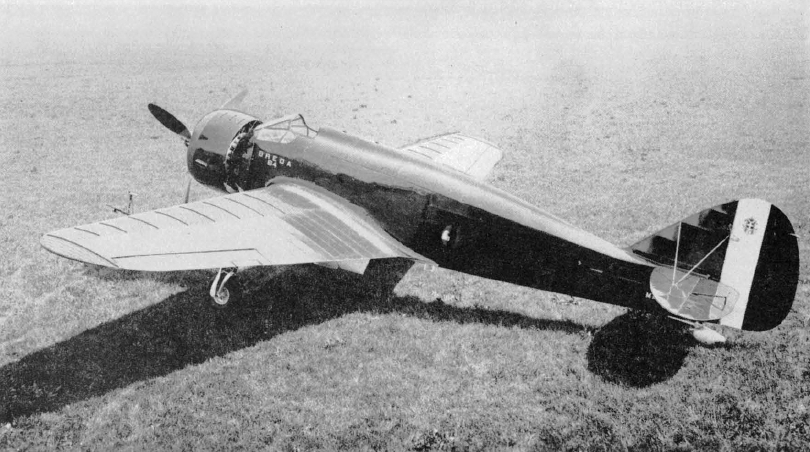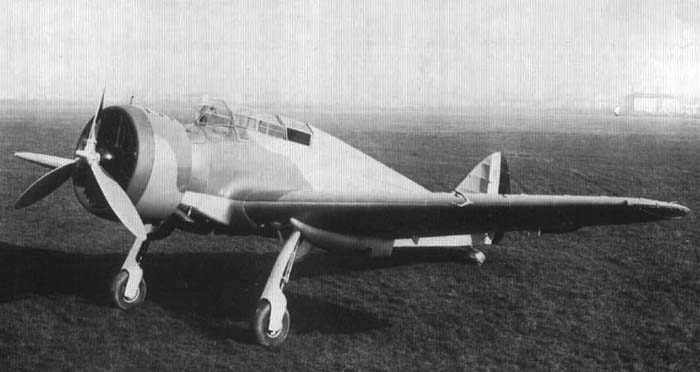Breda Ba.64 on:
[Wikipedia]
[Google]
[Amazon]
The Breda Ba.64 was an Italian single-engine
 A development of the earlier Ba.27 fighter (1932), the Ba.64 was designed in 1933 to requirements set out by the ''Regia Aeronautica'' for an aircraft able to undertake multiple roles: fighter,
A development of the earlier Ba.27 fighter (1932), the Ba.64 was designed in 1933 to requirements set out by the ''Regia Aeronautica'' for an aircraft able to undertake multiple roles: fighter,

Breda Ba.64
{{Portal bar, Italy, Companies, Aviation Ba.064 1930s Italian attack aircraft Single-engined tractor aircraft Low-wing aircraft Aircraft first flown in 1934
ground-attack aircraft
An attack aircraft, strike aircraft, or attack bomber is a tactical military aircraft that has a primary role of carrying out airstrikes with greater precision than bombers, and is prepared to encounter strong low-level air defenses while pres ...
used by the ''Regia Aeronautica
The Royal Italian Air Force (''Regia Aeronautica Italiana'') (RAI) was the air force of the Kingdom of Italy. It was established as a service independent of the Regio Esercito, Royal Italian Army from 1923 until 1946. In 1946, the monarchy was ...
'' during the 1930s.
Designed by Antonio Parano and Giuseppe Panzeri, it saw limited service in two units from 1936, together with the contemporary Caproni A.P.1. It was retired from active service in 1939, replaced by the more powerful derivative, the Ba.65.
Design and development
 A development of the earlier Ba.27 fighter (1932), the Ba.64 was designed in 1933 to requirements set out by the ''Regia Aeronautica'' for an aircraft able to undertake multiple roles: fighter,
A development of the earlier Ba.27 fighter (1932), the Ba.64 was designed in 1933 to requirements set out by the ''Regia Aeronautica'' for an aircraft able to undertake multiple roles: fighter, bomber
A bomber is a military combat aircraft that utilizes
air-to-ground weaponry to drop bombs, launch aerial torpedo, torpedoes, or deploy air-launched cruise missiles.
There are two major classifications of bomber: strategic and tactical. Strateg ...
and reconnaissance
In military operations, military reconnaissance () or scouting is the exploration of an area by military forces to obtain information about enemy forces, the terrain, and civil activities in the area of operations. In military jargon, reconnai ...
. The aircraft featured an all-metal, low-wing cantilever
A cantilever is a rigid structural element that extends horizontally and is unsupported at one end. Typically it extends from a flat vertical surface such as a wall, to which it must be firmly attached. Like other structural elements, a cantilev ...
monoplane
A monoplane is a fixed-wing aircraft configuration with a single mainplane, in contrast to a biplane or other types of multiplanes, which have multiple wings.
A monoplane has inherently the highest efficiency and lowest drag of any wing con ...
with a wire braced tail unit and fixed tail wheel. The open cockpit
A cockpit or flight deck is the area, on the front part of an aircraft, spacecraft, or submersible, from which a pilot controls the vehicle.
The cockpit of an aircraft contains flight instruments on an instrument panel, and the controls th ...
was placed well forward on the fuselage
The fuselage (; from the French language, French ''fuselé'' "spindle-shaped") is an aircraft's main body section. It holds Aircrew, crew, passengers, or cargo. In single-engine aircraft, it will usually contain an Aircraft engine, engine as wel ...
in line with the wing roots to provide an excellent field of vision down as well as forward. The headrest behind the cockpit was extended as a streamlined fairing all the way down the fuselage upper decking to the tail. Two prototype
A prototype is an early sample, model, or release of a product built to test a concept or process. It is a term used in a variety of contexts, including semantics, design, electronics, and Software prototyping, software programming. A prototype ...
s powered by a 522 kW (700 hp) Bristol Pegasus were developed, the first as a two-seater bomber with an armament of four 7.7 mm (0.303 in) machine guns in the wings and up to 400 kg (882 lb) of bombs in racks under the wings.Taylor 1980, p. 346. The second was a single-seater fighter configuration fitted with a semi-retractable main landing gear that when in its rearward retracted position, provided less drag as well as protection in case of a wheels-up landing.
The first prototype flew in 1934 but flight tests revealed a lacklustre performance despite the use of a variable-pitch, three-blade propeller. Nonetheless, a limited production order was placed for a composite variant that combined the two-place configuration of the bomber (although a small number of single-seaters were built in the initial series) with the semi-retractable fighter landing gear. The production variant was powered by a 485 kW (650 hp) Alfa Romeo 125
Alfa Romeo built/designed a range of aircraft engines based on the Bristol Jupiter and Bristol Pegasus designs, designated Alfa 125, Alfa 126, Alfa 127, Alfa 128, Alfa 129 and Alfa 131. All these essentially similar engines were mainly fitted to ...
C and although single-seat variants were built, all the Ba.64s were converted to two-place bomber/attack aircraft with a single 7.7 mm (0.303 in) machine gun mounted in the rear cockpit. Production of the 42 Ba.64s was complete by 1936.
Operational history
Production aircraft were sent to 5° and 50° ''Stormos'' but pilots considered them ill-equipped to undertake missions as a bomber or fighter. The faults including being underpowered, heavy handling characteristics and a tendency to enter high-speed stalls that led to a number of fatal crashes. After limited use in front-line service, the Ba.64s were relegated to second-line duties although a small number survived until March 1943. Two Ba.64s were exported by the Soviet Union in 1938 while a single example saw brief service in June 1937 during the Spanish Civil War with Nationalist forces in the ''Aviazione Legionaria
The Legionary Air Force (, ) was an expeditionary corps from the Italian Royal Air Force that was set up in 1936. It was sent to provide logistical and tactical support to the Nationalist faction after the Spanish coup of July 1936, which mar ...
''.
Operators
;Specifications (Ba.64)

See also
References
* Mondey, David ''The Hamlyn Concise Guide to Axis Aircraft of World War II''. New York: Bounty Books, 2006. . * Taylor, Michael J.H. ''Jane's Encyclopedia of Aviation'' Vol.2 . Danbury, Connecticut: Grolier Educational Corporation, 1980. . * Winchester, Jim. "Breda Ba.65." ''Aircraft of World War II: The Aviation Factfile''. Kent, UK: Grange Books plc, 2004. .External links
Breda Ba.64
{{Portal bar, Italy, Companies, Aviation Ba.064 1930s Italian attack aircraft Single-engined tractor aircraft Low-wing aircraft Aircraft first flown in 1934